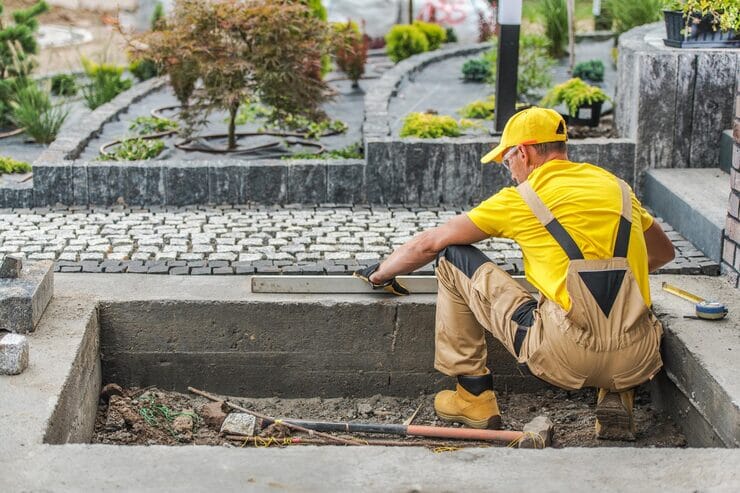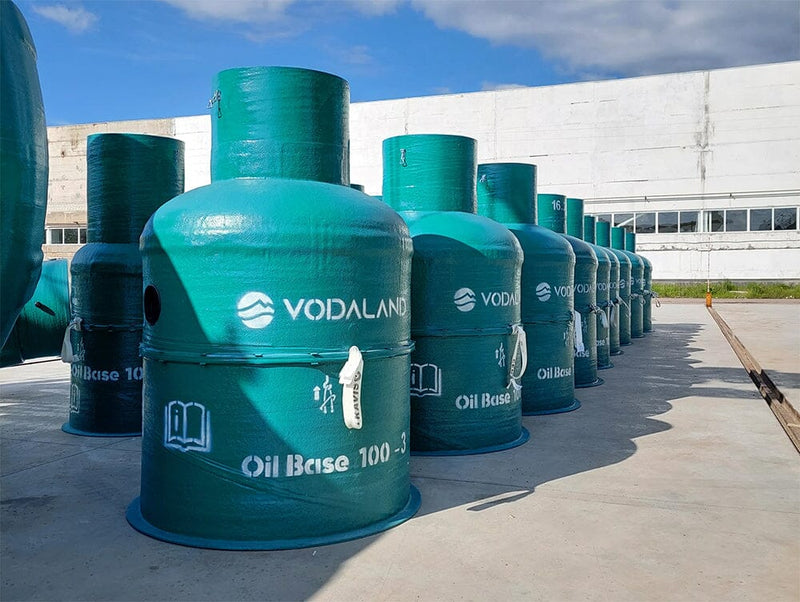Best Commercial Kitchen Drains and How to Choose Them
-
27/11/25
-
Vodaland Canada
A busy line, a packed dish pit, and a constantly washed prep area create rivers of rinse water, fats, and solids moving across the floor. The right drainage plan keeps staff safe, prevents inspection issues, and protects margins. This guide compares trench and slot systems, highlights essential features, and shows how to choose commercial kitchen drains that comply with code and meet the day-to-day reality on any commercial kitchen floor.
Why Floor Drainage Matters in Commercial Kitchens
Daily washdowns push large volumes of water mixed with food debris, cleaners, and grease toward the lowest point. Poor design creates clogged drains, slip hazards, and downtime. A sound drain system manages water flow during peak service, washdown, and emergencies, then supports rapid evacuation of wastewater. Kitchens also face corrosion from acidic sauces and chemical sanitizers, so materials and seals matter. The goal is simple: keep the line moving, prevent backups, and minimize health code violations.

Common Drainage Challenges in Commercial Kitchens
Food Waste Blockages
Prep and dish areas generate food scraps, peels, and small food particles. When these collect in flat spots or undersized pipes, they form an obstruction that slows fluid movement. Once solids accumulate and solidify, the kitchen is at risk of foul odors and expensive rodding.
Grease and Fat Buildup
Hot fry oil and pan residue cool fast, coating the inside of drain lines with sticky residue. Over time, fatty deposits constrict the diameter and create chronic grease buildup. A proper filter or strainer upstream of the floor drain helps eliminate the problem before it reaches the trap.
Operational Disruptions and Safety Hazards
Standing water is a slip hazard and a breeding ground for bacteria. Backups near the sink or dishwasher can halt service, and overflows severe enough to approach sewage lines can trigger closures. Routine inspection should be part of the plan, along with emergency procedures and clear access to cleanouts.
Key Features to Look for in a Commercial Kitchen Floor Drain
A reliable drainage solution balances performance, cleanability, and code compliance.
-
Material and finish: Opt for stainless steel bodies and channels for corrosion resistance and long-term durability.
-
Flow capacity: Size to peak demand, including spray downs. Quantify gallons per minute and the occasional gallon dump from kettles.
-
Capture and separation: Include tamper-proof baskets, strainer cups, or integrated filter sections that trap food waste before it reaches the trap.
-
Hygienic design: Smooth channels, radius corners, and fully welded seams reduce harbor points. A tight flange on a sanitary food processing drain improves waterproofing under resinous floors.
-
Safety and access: Slip-resistant grate options and simple lift-out components simplify installation, cleaning, and inspection.
-
Compatibility: Ensure the channel and drainage pipes are plumbed correctly to existing runs and that a licensed plumber signs off on loads and slopes.
-
Code alignment: Coordinate with local officials on materials, cleanouts, and disposal of oils.
Trench Drains
Trench systems are continuous channels that collect runoff across long runs. They suit cooklines, dish rooms, and docks where large amounts of solid debris or washdown water converge.

Advantages of Trench Drains
-
High capture capacity for large volumes and quick evacuation, even during hose downs.
-
Wide choices in diameter, slope, and grate types for carts and heavy racks.
-
Easy interception of solids with baskets or silt buckets, reducing downstream wear on drainage pipes.
-
Flexible layouts around equipment and cold rooms, ideal when several zones converge at the same trench drain.
Disadvantages of Trench Drains
-
Wider channels mean more surface area to clean. If baskets are ignored, debris can accumulate and solidify.
-
Incorrect slopes or poor installation create slow spots where sticky residue forms.
-
If covers are not tamper-proof, staff may remove them during rushes, creating safety issues.
Slot Drains
Slot systems use a narrow opening with an internal channel. The minimalist profile suits modern kitchens seeking easy cleaning and minimal visual interruption.

Advantages of Slot Drains
-
The top is highly sanitary with minimal edges, allowing squeegees to glide across effortlessly.
-
Fewer parts topside, which speeds nightly cleaning and eliminates snag points for carts.
-
High strength is available in stainless steel bodies despite their slim appearance.
-
Ideal for straight runs along the cookline or perimeter where area drains fall short.
Disadvantages of Slot Drains
-
Smaller apertures require diligent pre-capture of solids; a robust filter or basket upstream is vital.
-
Access for rodding is through inspection ports; without scheduled inspection, blockages may go unnoticed.
-
Peak water flow is strong but can be limited compared with wide trench channels if loads spike.
Getting the Right Drainage for Your Commercial Kitchen
Choosing between trench and slot drains starts with mapping surface slopes, cleaning methods, and the volume of solids moving across the floor. Heavy prep zones often benefit from trench channels with baskets to intercept peels, while sleek cooklines are better suited for slot channels that clean quickly and maintain smooth traffic flow. Consider each area individually: dish zones require surge capacity for racks and sprayers; prep zones need effective capture for peels and batter; fry stations benefit from separation features to keep oils out of main drain lines.
Practical Planning Checklist
-
Assess demand. Count hoses, spray heads, and nightly washdown routines. Factor in equipment that can dump a kettle or a combi pan all at once.
-
Locate pre-capture. Install baskets, strainers, and grease management upstream to protect pipes and prevent clogged drains.
-
Confirm slopes and connections. Verify plumb alignment, tie-ins, and the diameter of buried lines before cutting the slab.
-
Choose access. Plan lift points and cleanouts so crews can maintain the system without tools.
-
Coordinate with authorities. Share spec sheets during design to avoid health code violations and meet food service requirements.
Why Floor Drainage Matters in Commercial Kitchens
Effective drainage protects staff and inventory, extends the life of flooring, and simplifies audits. Floors with inadequate capture turn washdowns into slip hazards and increase the risk of closures. Properly sized channels, sealed interfaces, and strategically placed access points help kitchens avoid emergency maintenance and minimize lost service hours.

Key Features to Look for in a Commercial Kitchen Floor Drain
When evaluating floor drains in commercial kitchens, weigh performance, maintenance, and compliance:
-
Performance: channel slope, diameter, and water flow during peak washdowns.
-
Maintenance: quick access to baskets, tamper-proof covers, and parts that survive cleaners and thermal shocks.
-
Compliance: documented ratings for load, temperature, and chemical exposure, plus NSF and local code alignment.
Food Waste Blockages
Solids naturally flow toward low points. Preventive measures begin with guards on prep tables, pre-rinse screens at dish stations, and baskets in channels. Without those, solids hit the first bend, causing slow drainage. Effective design uses interceptors to collect solids and designated disposal points to remove waste safely from the establishment.
Grease and Fat Buildup
Hot oil flows like water until it cools, at which point it adheres to pipe walls. Grease traps and maintained interceptors catch fats before they wander through the system. Staff training matters; a single dump of fryer oil can coat the run and cause a shutdown. Use rated lines that handle heat and chemicals, and schedule pumping before holidays.
Operational Disruptions and Safety Hazards
Backup at the dish sink, pooling near fryers, and odors that hint at sewage all cut into service and tip risk scores. Routine walk-throughs should include basket checks, surface cleaning, and notes on odors or slow drainage. Keep an emergency plan to call a plumber and record what failed so the next inspection shows improvement.
Quick Specs Glossary for Kitchen Teams
-
Channel Body: prefer fully welded stainless steel for longevity.
-
Top Finish: slip-resistant grate on trench channels; slot openings for minimal surface details.
-
Interfaces: a continuous flange bonds the system to resinous or tiled floors.
-
Protection: debris cups, filter screens, and strainers capture solids and make disposal safe.
-
Loads: confirm cart and equipment ratings, plus thermal shock resistance.
Featured Products
From Drain de tranchée pour la transformation des aliments collection


















